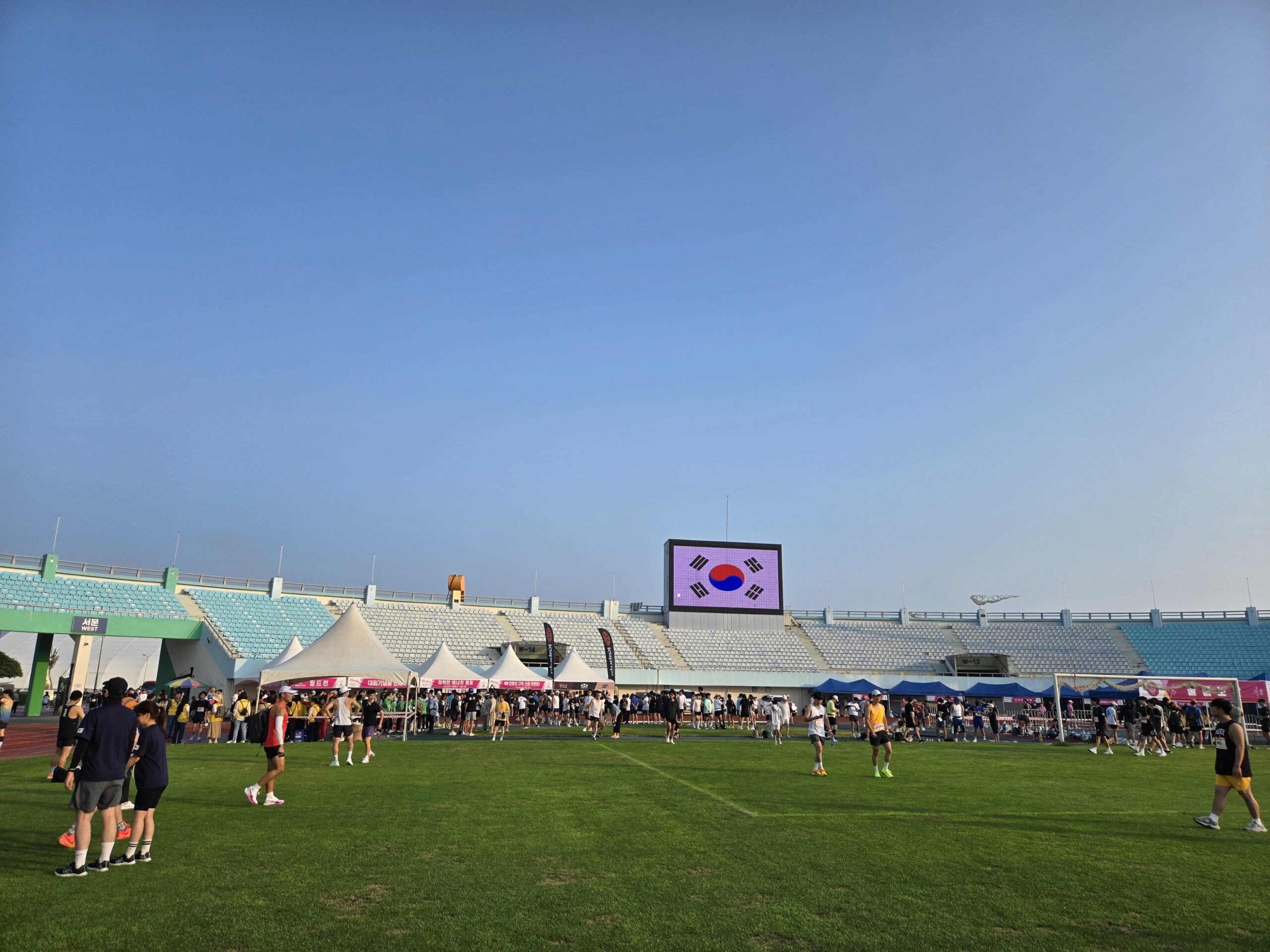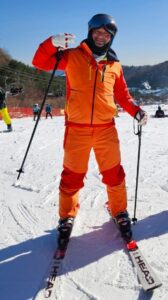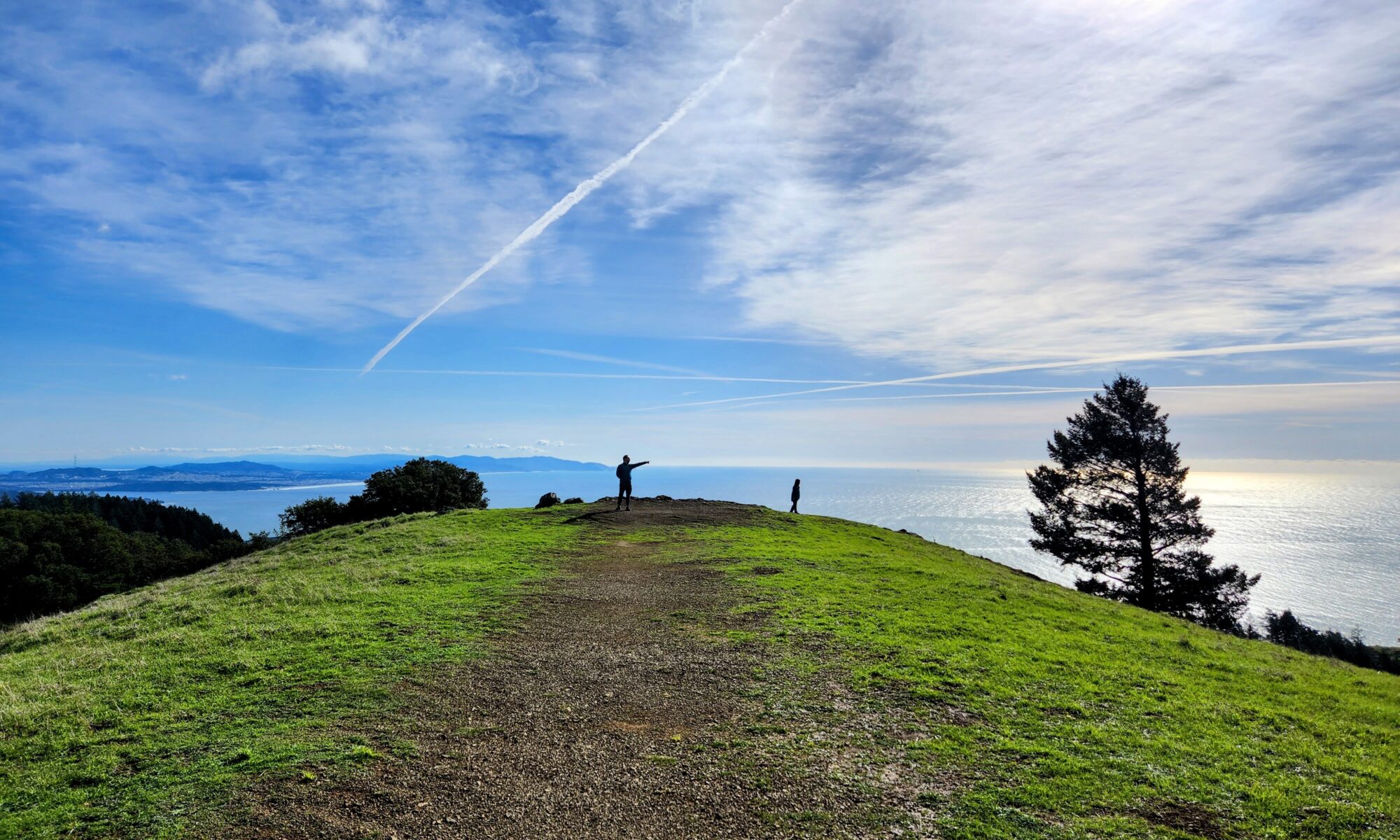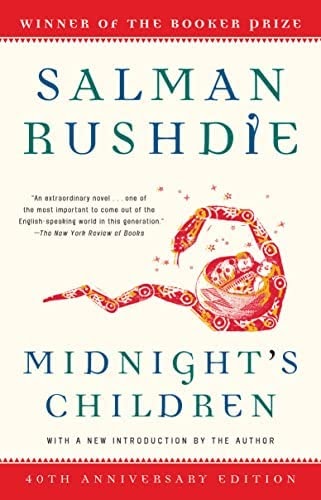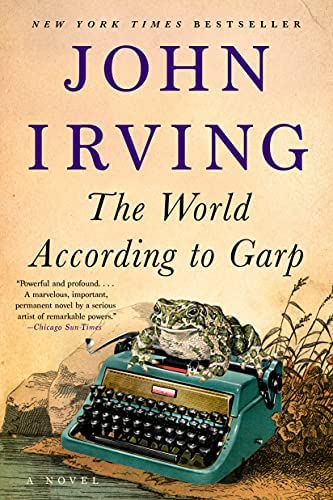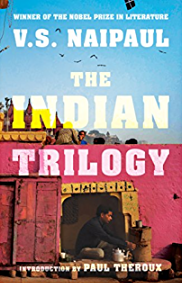Early on the morning of my fiftieth birthday, I walked into the Icheon Sports Complex, a stadium in the middle of South Korea. I was there to run my first-ever 5K. Up on a big monitor was the taeguki, the Korean flag, matching the little taeguki on the sleeve of my running shirt, which had arrived in the mail a few days earlier, along with my bib number, courtesy of the 25th Icheon Ceramics Marathon.
Icheon isn’t famous, but if it were, it would be for having its role in ceramics production during the Joseon Dynasty. A smallish city of about a quarter million people, it’s now home to Hynix, the world’s second-largest producer of memory chips, which I suppose means the city has retained its heritage of wringing value from dirt. On the drive out, I’d passed through thick fog that clung to the dark green late summer mountainsides in a way I love because it makes them look like old ink brush paintings, and then driven across farmland redolent of shit, but now the sky was cloudless and the air smelled faintly of sunscreen.
In the stadium
I had arrived early, and now I had a long time to wait. I found a booth labeled “Information” in Korean and asked if there was anything I needed to do before the start of the race. “No, just run,” the woman told me, demonstrating for clarity by jogging in place. For a while I watched a woman on the main stage sing trot music, the warbly, disco-inflected pop style of the seventies that’s become a kind of requirement at any sort of local festival in Korea, like classic rock at an American county fair. I sampled a free sample of a sports drink that was dark red and salty, like blood. I saw a long line and considered standing in it until I figured out that it was for sports taping; I could too easily imagine the horror and confusion of some poor tapist trying to manage the hair situation on my Ashkenazi legs.
Mostly I people-watched. What with my neon-green running shoes and my headband and my knee sleeve and my photochromic Oakleys — a birthday gift from my wife — I was pretty sure I looked like a total nerd, but so did almost everyone else. I don’t know if it’s quite such a thing in America, but Koreans, when they do anything athletic, tend to dress the part. Up on mountain trails, you’ll see packs of people in very specific hiking gear. Go to a beach, and everyone’s in long-sleeve swimming outfits to keep the sun off. I don’t golf, but my wife does, and she’s got the outfits. So while there were a few people in something like street clothes, nearly everyone had some well known brand of running shoe — Nike, Adidas, Asics, Hoka — and some kind of slightly complicated mesh shirt. The old guys all seemed to have knee sleeves. Around the sides of the track were tents set up for different running clubs, each with its clump of people in matching outfits taking group photos.
Nothing anywhere had anything to do with ceramics.
I waited, restless. I walked around, walked around again. I went to the bathroom three times. On the stage there were speeches, more songs, exhortations, and a group stretching program that everyone ignored. Then at last it was time to line up. Marathoners went first, then the 10K runners, and then us, the 5K rabble in the back, each pack assembled behind two volunteers holding up a banner across the track. When the marathon gun went off, there was a cheer, but our group mostly stayed quiet, trying to save strength and also to stay cool as we waited in the sun, which was growing more intense by the minute. This has been the hottest summer ever recorded in Korea, and though the early mornings weren’t that hot anymore, they were humid as hell — 91 percent on this morning — and the heat climbed fast once the sun was out, especially if you stood under it unprotected.
The packs moved up. The 10K runners began their race. And then it was our turn.
Running for the clock
We 5K runners hadn’t been given chips to measure our times, so all we had was the clock at the starting line, which was also the finish line. I didn’t remember to check it as I tried to maneuver my way to an open running path, but it must have taken at least twenty or thirty seconds for me to cross. Just navigating the crowd took a certain amount of energy. In my workouts I tend to take off at a bolt until my heart rate hits the target level, but that was impossible until we got out of the stadium and could spread out on the road. I passed kids as young as ten who would sprint for a few paces, then walk again. I passed people pushing strollers. And faster runners passed me. A lot of them.
Soon we were all running down a long hill — not too steep, but still, enough that I knew it would be murder on the way back. When that bottomed out, it was up another, similar hill. I was just starting down the other side, running past ginseng fields, identifiable by the black shade covers over the crops, when I saw the first runners already on the way back up. Soon I could hear the crashing clang of traditional samulnori percussion music blasting from loudspeakers at the turnaround point.
I was in the middle of the pack somewhere, and there were times throughout when I had to maneuver around some cluster of people who’d slowed to a walk. As time went on, I fell in with certain people going at something like my pace: a very tall woman, an older man running next to a younger friend and shouting, “Hup! Hup! Hup!” With the race more than half over and the exhaustion creeping in, I had the rather ungenerous thought that I had rightly fallen in with the other fat-asses.
The last hill, as I had expected, was brutal, and more and more people slowed to a walk as we climbed. But I had promised myself I would run the whole way, and I fought for it. Somewhere in my running mix was “Freedom,” by Beyonce, and I thought of it now: “A winner don’t quit on themselves.” Then the hill leveled out and we turned into the stadium’s blacktop parking lot, which was radiating heat. I slowed, but I kept running. The temperature dropped when we got back onto the painted surface and into the shade of the stadium walls, and then we were inside, back on the soft, springy track.
I looked at the clock.
My best 5K time in training was 35:43, as measured by my Samsung Galaxy Watch, which may or may not know exactly how far five kilometers is. What with the crowd and all, my goal for the race had been a modest forty minutes. But now I saw that we were still somewhere in the 36th minute. In a final surge, I hurled myself down the track and ran under that archway before the clock ticked over to 37.
Participation trophies
On the far side of the line, hot and tired as I was, I didn’t collapse. Actually, I headed straight for the bathroom. This is what happens when you’re a fifty-year-old man who has hydrated. After that I grabbed a bottle of water, and then a snack pack with a box of grape juice, a bun filled with sweet cream and red bean paste, and a medal on a red ribbon. I put it on. (The medal, not the bun.) It was heavy. (The medal, not the bun.) Yes, it was a participation trophy. (The medal and the bun, actually.)

I’m Gen X. I never got participation trophies. I’d earned this.
I spent a while milling around the stadium, not quite ready to leave. I wanted to savor this. I was proud of myself.
Was my time a good time? Depends how you look at it. It wouldn’t impress serious runners, but it was about average for men in my age range (50 to 59, which I was as of that day), which is a lot better than where I was a year earlier, when I took up running and went on 20-minute trots so slow grandmas passed me on their power walks. My 5K pace then would’ve been close to an hour, but I never would’ve made it that far. Now I’d completed a real, honest, actual 5K, running the whole way and arriving somewhere in the middle of the pack.
And it was my birthday. There was a booth selling fancy carbon-plate running shoes that are super light and supposed to give you more bounce. I bought myself a pair.
When I got home, my family welcomed me like a hero. My ten-year-old daughter made a big fuss over my achievement, which was sweet of her. My wife, who first coaxed me into going to the gym and working with a personal trainer some years back, and who bought me my first real fitness clothes because working out deserved better than ratty old shorts and T-shirts, cooked up a delicious plate of bulgogi and rice and then sat there watching me eat, wearing her adoring fangirl face the whole time.
Then I took a nap.
By the next day I’d already signed up for another 5K. This one would be in late October by the Tancheon River, the same river where I do my training runs. A couple of days after that, I took my new shoes out for a spin. And you know what? They worked. I hit a new personal best of 35:36. So can I do the Tancheon run in under 35?
Stay tuned.

